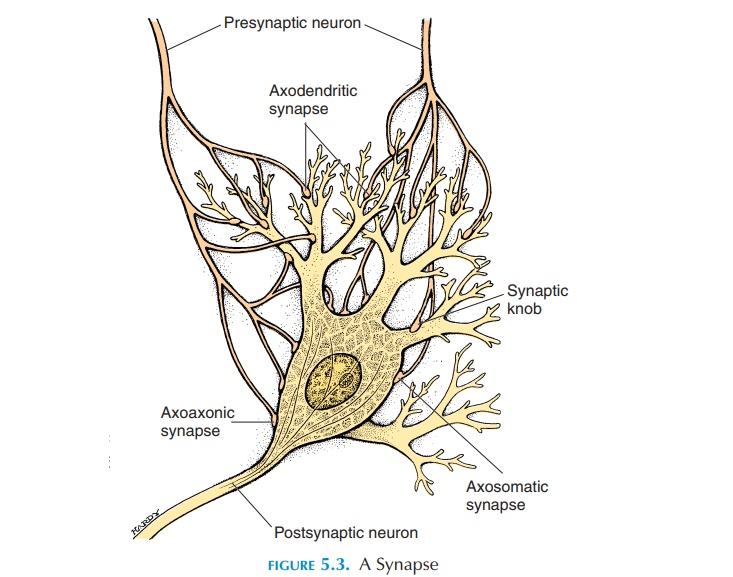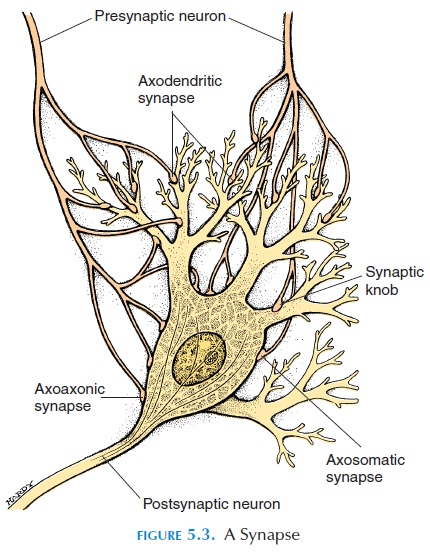Chapter: The Massage Connection ANATOMY AND PHYSIOLOGY : Nervous System
The Synapse

THE SYNAPSE
A synapse (see Figure 5.3) is the region where neurons communicate with each other. The axon of the neuron, which brings impulses to the synapse, is the presy-naptic neuron. The neuron, which receives the im
The end of the axon of the presynaptic neuron is enlarged into a bulb, the synaptic knob, or terminal. The synaptic knob usually has neurotransmitters packaged in small structures called synaptic vesicles. When the presynaptic neuron is stimulated, it re-leases neurotransmitters into the gap between the two neurons. These then become attached to receptors on the cell membrane of the postsynaptic neuron, pro-ducing electrical changes.

A synapse may be at a dendrite (axodendritic), on the soma (axosomatic), or along the length of the axon (axoaxonic). Rarely, a synapse may exist be-tween two dendrites (dendrodendritic). The neuro-transmitters are actually manufactured in the soma and transported down the axon. Transport of sub-stances can also occur in the opposite direction, from the end of axon to the soma.
Neurons, in addition to communicating with each other, can communicate with another cell type. This communication is known as theneuroeffectorjunction. Such communications are seen betweenthe neuron and muscle—neuromuscular junction-and between neuron and glands—neuroglandular junction.Neurons also in-nervate fat cells.
Related Topics